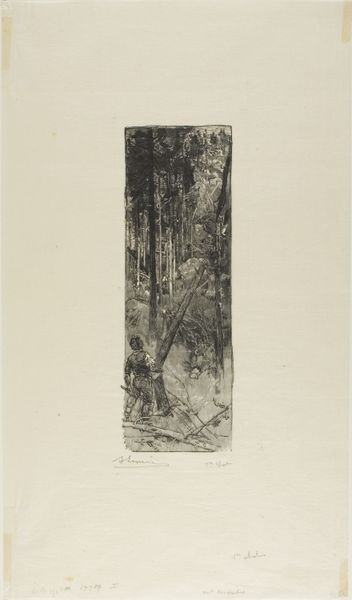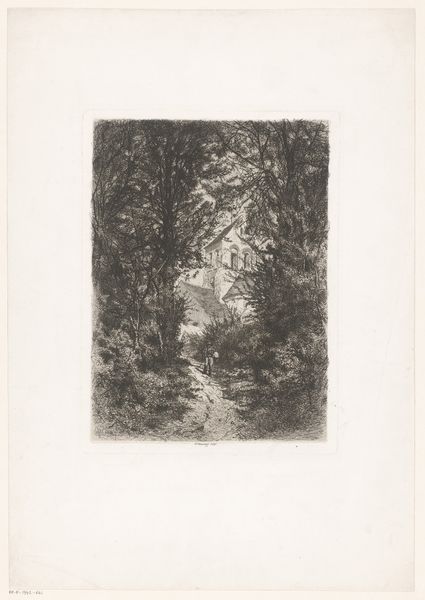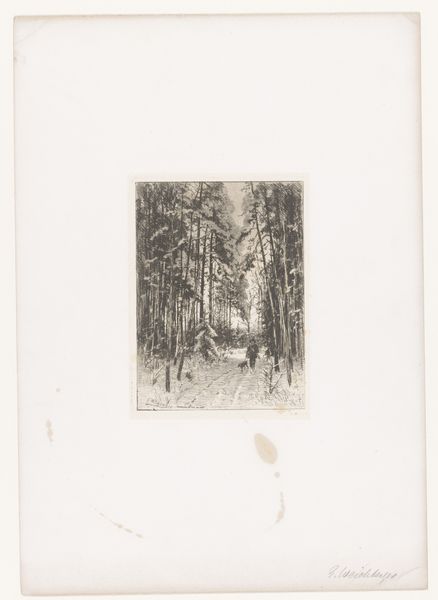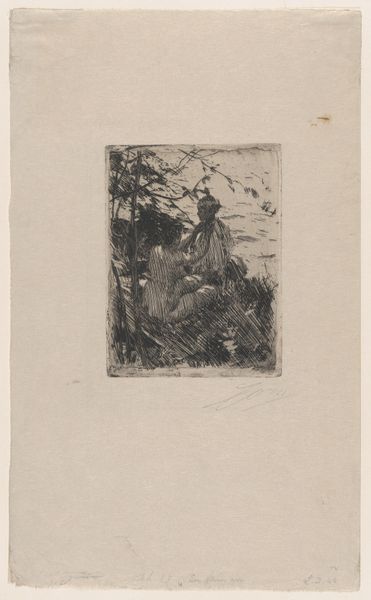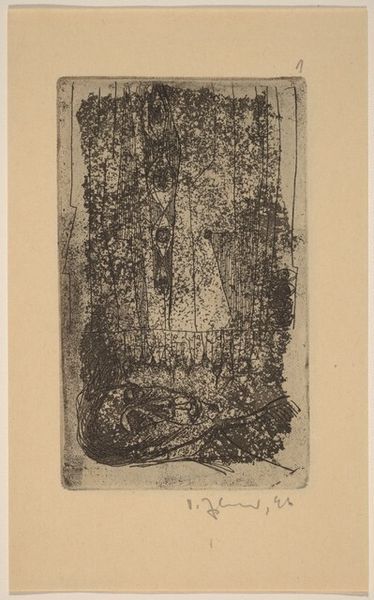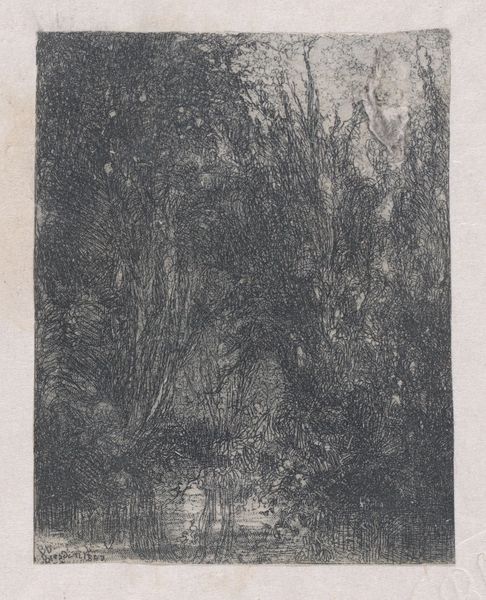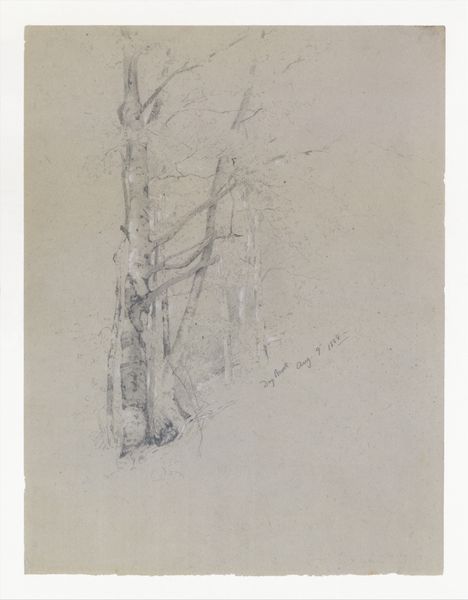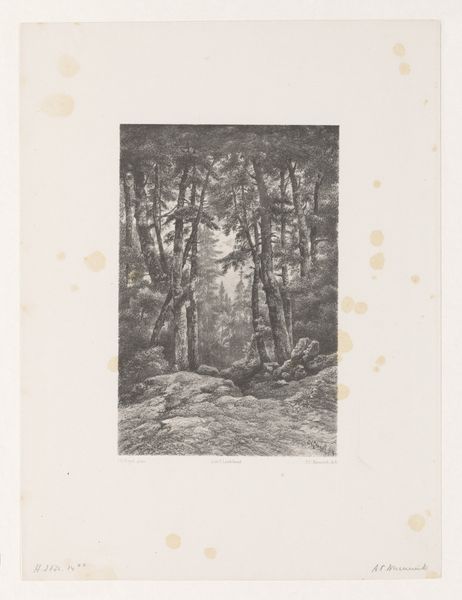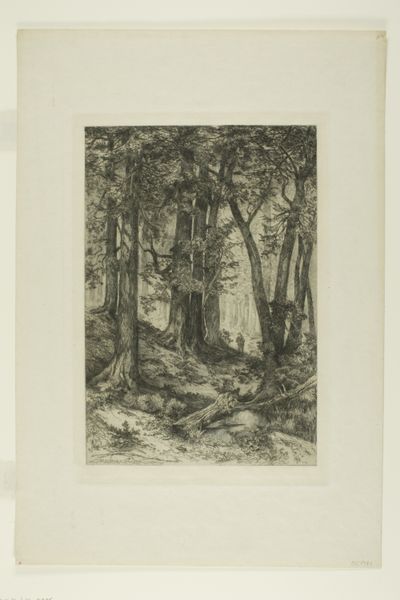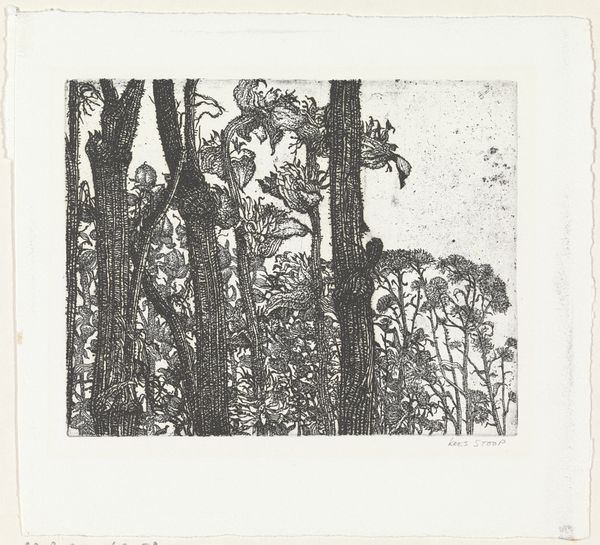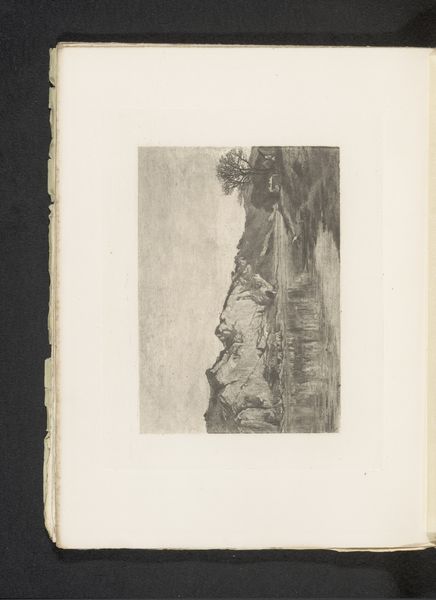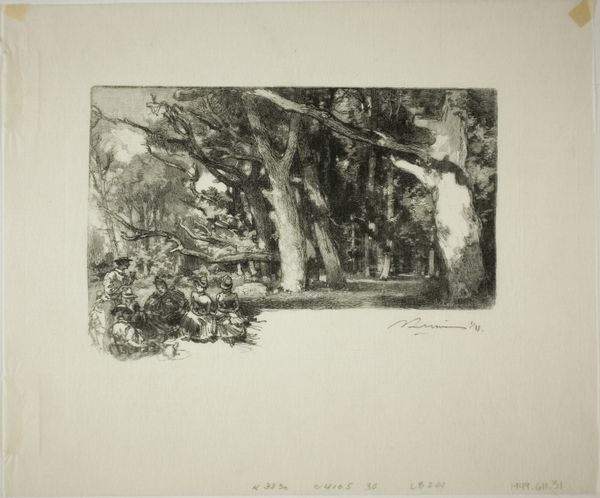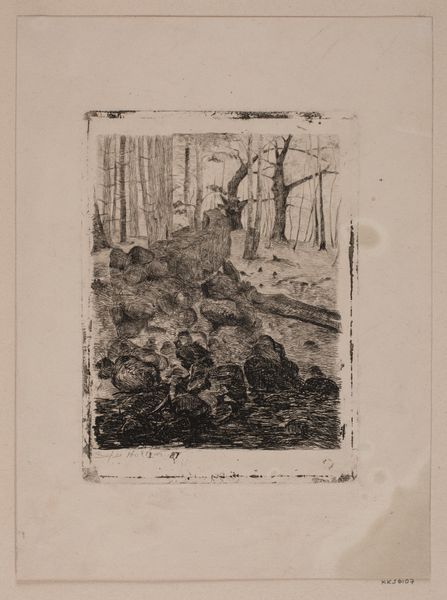
drawing, print, paper, engraving
#
drawing
# print
#
landscape
#
paper
#
engraving
Dimensions: 208 × 71 mm (image); 348 × 186 mm (sheet)
Copyright: Public Domain
Curator: Let’s turn our attention to Auguste-Louis Lepère's “Falling Pines,” possibly from 1908. It's an engraving printed on paper, and currently part of the Art Institute of Chicago's collection. Editor: My immediate sense is one of slightly unsettling grandeur. The tall, thin format forces the trees upward, but something feels precarious, like it could all topple. Curator: Precarious is an excellent descriptor. Lepère created this work during a period of intense urbanization in France. His landscapes, often featuring laborers interacting with nature, frequently express a subtle anxiety about industrial encroachment and its effect on rural life. Editor: Yes, I see what you mean. The lone figure in the foreground, dwarfed by the trees, becomes emblematic of humanity's small place amidst the overwhelming forces of nature, and maybe of the changing times, with the urban population overtaking the rural one in European states. It gives a sense of loneliness in confrontation with that overpowering landscape. Formally, it seems the composition is attempting to capture, perhaps, the sublime—I find myself thinking of Kant. The contrast of light and shadow accentuates the depth and drama within what could otherwise be a standard landscape. Curator: That play of light is masterful for sure and very important in grasping Lepère’s ideology of arts and society: the way the trees seem to be collapsing upon him isn't a celebration of the picturesque, it's a contemplation of power. This forest space should perhaps be read as representative of natural resources which men are there to deal with—either through manual exploitation, or, soon enough, industrialized process. Editor: Thinking of manual exploitation, look how his cross-hatching suggests textures – the roughness of bark, the soft filtered light. A real range, within such a limited tonal scale. It's not just documentation; there's genuine sensitivity to materiality there. It isn’t simply an ode to landscape, nor is it just about laborers; it's a dialogue between these elements. It explores ideas of work and humanity through form, depth, and balance of masses and color, the relation of human to nature. Curator: Lepère’s intention might not necessarily have been simply to document a changing reality but instead make claims about how the working class stands to relate with landscape, production, and modern life. Editor: A powerful statement rendered with surprising delicacy of tone, that invites, and perhaps even compels, us to revisit our place in this complex world. Curator: Absolutely. A wonderful, nuanced work for sure that can bring discussions around economy and production into consideration, with something that first seems, essentially, just figurative.
Comments
No comments
Be the first to comment and join the conversation on the ultimate creative platform.
